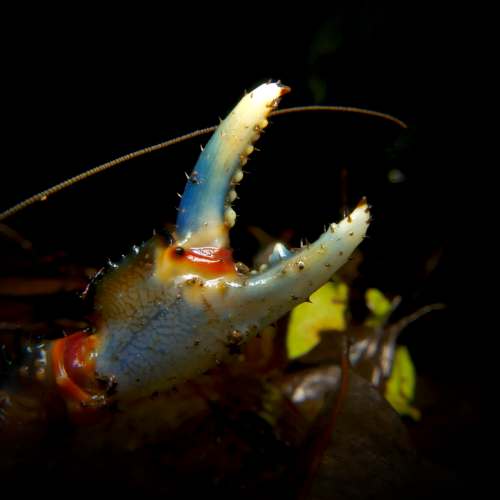A special blue-clawed crustacean is living near the creek on the picabeen walk at Mary Cairncross Scenic Reserve.
It belongs in the spiny crayfish genus, but is smaller and does not have the long spines like it’s larger relations.
The mountain freshwater crayfish is bluish with an orange dusting on the sides of the body and claws.
This species has a very limited distribution, only found from the streams of the Blackall Range to the Conondale Ranges. It does not live lower than an altitude of 240metres. Mary Cairncross Scenic Reserve is therefore critical habitat.
The mountain freshwater crayfish is an endangered and protected species on the IUCN Red List of threatened species. Land-clearing, habitat fragmentation, riparian degradation, water quality and illegal poaching are all impacts which threaten this species.
The mountain freshwater crayfish digs burrows underneath the creek bed during the day. Females take up to six years to reach full maturity, making it a slow-growing species. Normally only one crayfish lives per burrow.
Site-specific research in partnership with the University of the Sunshine Coast is ongoing. The population here must be monitored in order to manage threats and protect them into the future.
Keep an eye out for the burrow openings surrounded by mud balls along the piccabeen boardwalk.
